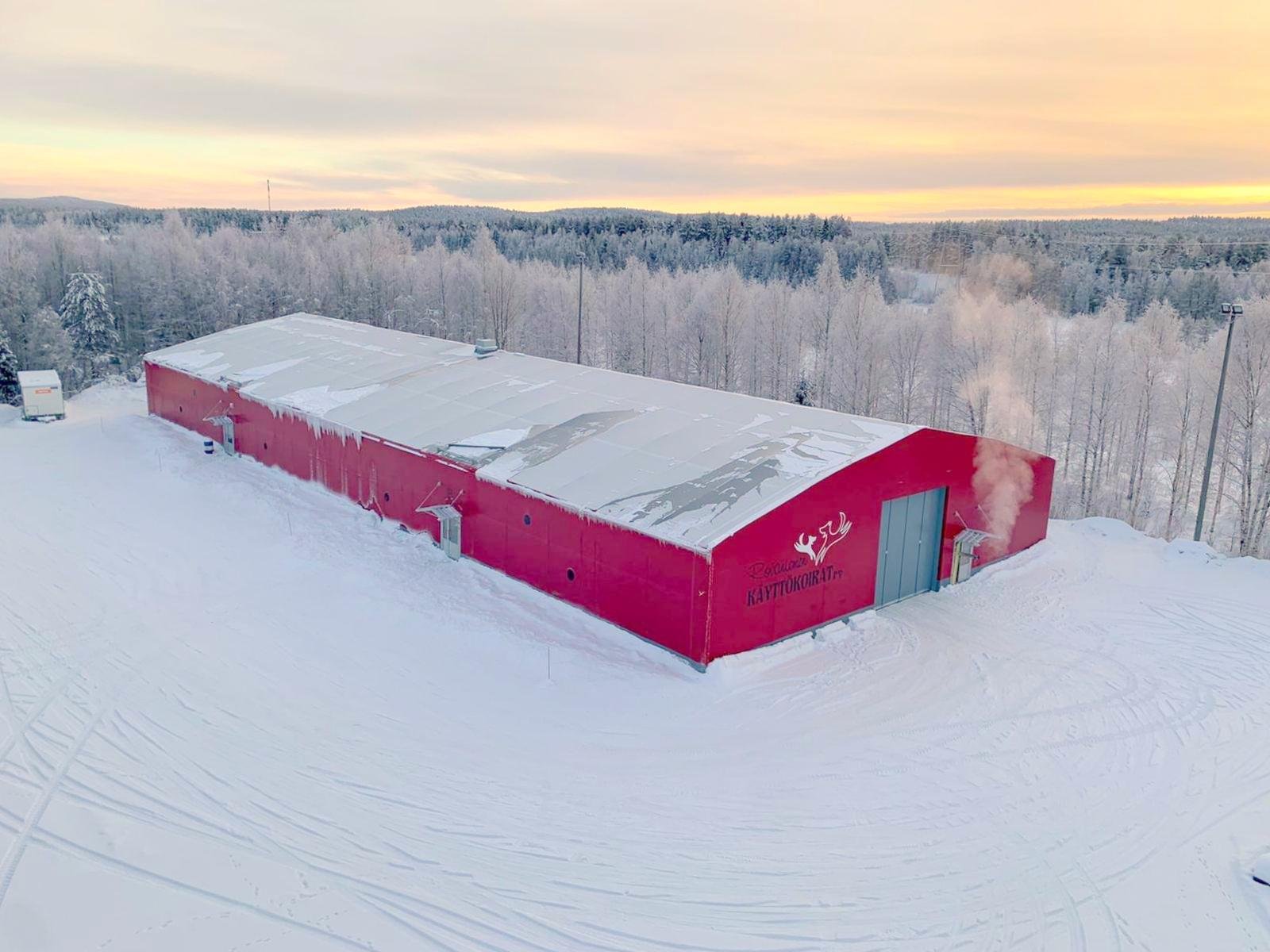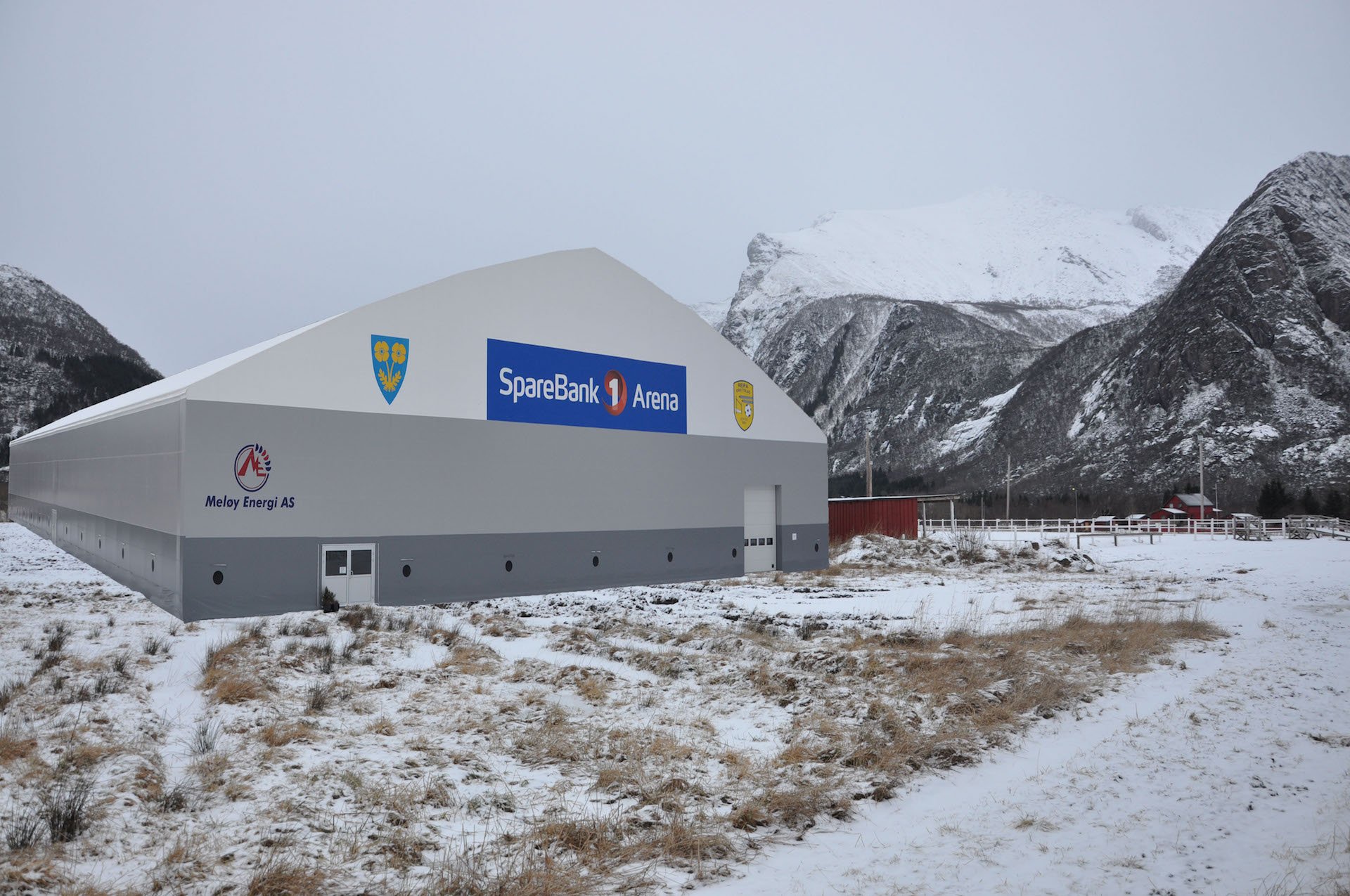Snowy winters and heavy snowfall that results in a thick layer of snow over a short period of time put a strain on buildings. News reports of sports halls collapsing under snow loads are sad to read, and such things should not happen. How can a property owner or builder make sure the building is safe and can withstand even heavy snow loads?
We have listed the three most important factors that influence the safety of the building.
1. Structure dimensioned for the site
Each building has its own requirements related to the location and environmental conditions of the building, and these requirements must be taken into account in the design of the structure. The terrain, weather conditions at the site and other nearby buildings are examples of things that affect the structure’s prerequisites to be sufficiently durable.
It should be noted that norms have changed over the years, because of which any snow that starts accumulating on the roofs of halls should be removed.
-1.jpg?width=1900&name=Best-Hall_3422_Niinikuruntie_D_(11)-1.jpg)
2. High-quality materials and sturdy technology
The quality of the materials used significantly affects their durability. Therefore, it is a good idea to make sure that the columns and other supporting structures of the building are made of high-quality CE marked materials.
For example, the profile and steel grade of the steel pipe used in steel construction influence the load bearing capacity of the structure. There may also be crucial differences in the durability and wear resistance of covering materials. The larger the truss spacing, the greater the risk that the fabric will yield under a heavy snow load, resulting in the formation of bags on the roof that put a strain on the structure. The joint solutions and the materials used in them also influence the durability of the structure.

3. Monitoring the snow load and removing snow when necessary
Even if the structure is dimensioned for demanding conditions, snow can become surprisingly heavy when it is wet. Therefore, it is good to actively monitor the snow load on the roof and proportion the amount of snow to the load bearing capacity of the building.
The advantage of fabric-covered PVC buildings is the slippery surface of the fabric, which facilitates the sliding of snow from the roof. However, decades-old cover fabrics may have lost some of their slipperiness, making snow less likely to fall off the roof. Especially during thawing, snow usually falls off the roof of a fabric-covered building by itself within a day. However, it is advisable to remove the snow if it starts piling on the roof and the load is calculated to be close to the building’s load bearing capacity or if the building is starting to reach the end of its service life. When removing snow, care must be taken not to damage the covering with the tools. The safest way to remove snow is to use an aerial work platform and a plastic scoop or shovel.
Best-Hall is a Finnish forerunner in building construction, with 45 years of experience in building durable steel-framed PVC-covered buildings. Best-Hall’s steel structure is CE certified, and the steel frame of each building is custom-made in accordance with EN 1090-2. In the snowy areas of Austria, for example, Best-Hall buildings are valued specifically for their snow load bearing capacity.
